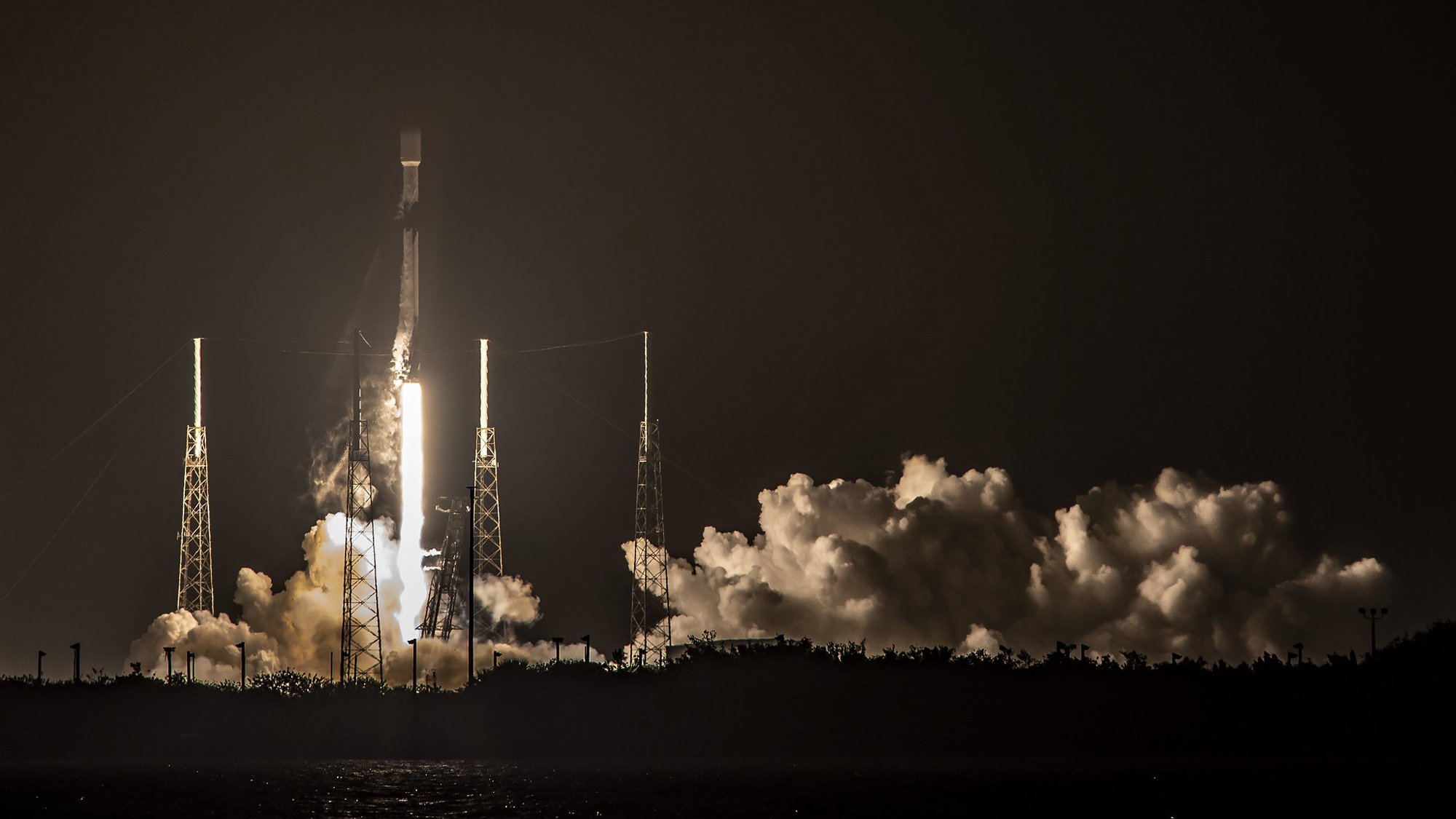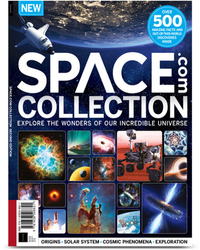
Update for 7 p.m. EST on Friday (Feb. 5): SpaceX announced on Friday afternoon that it's standing down from Sunday's (Feb. 7) planned launch of 60 Starlink internet satellites to perform additional inspections of the Falcon 9 rocket involved. The company has not yet announced a new target launch date for the mission.
SpaceX will launch another big batch of its Starlink internet satellites early Sunday (Feb. 7) on a record-tying mission, and you can watch the action live.
A two-stage Falcon 9 rocket topped with roughly 60 satellites for SpaceX's growing Starlink broadband constellation is scheduled to lift off Sunday at 4:31 a.m. EST (0931 GMT) from NASA's Kennedy Space Center (KSC) in Florida. Shortly thereafter, the booster's first stage will come back down to Earth for a vertical landing.
You can watch all the action live here at Space.com, courtesy of SpaceX, or directly via the company.
The launch was originally slated to occur early Friday (Feb. 5), but SpaceX delayed the flight to allow time for additional rocket checks, as well as for the company to unload the payload fairings captured after another Starlink flight, which launched earlier today.
Related: SpaceX's Starlink satellite megaconstellation launches in photos
Space.com Collection: $26.99 at Magazines Direct
Get ready to explore the wonders of our incredible universe! The "Space.com Collection" is packed with amazing astronomy, incredible discoveries and the latest missions from space agencies around the world. From distant galaxies to the planets, moons and asteroids of our own solar system, you’ll discover a wealth of facts about the cosmos, and learn about the new technologies, telescopes and rockets in development that will reveal even more of its secrets.
Sunday's mission, known as Starlink 17, will mark the eighth orbital launch for this particular Falcon 9's first stage. That will tie the SpaceX rocket-reusability record, which was set last month during another Starlink liftoff.
Get the Space.com Newsletter
Breaking space news, the latest updates on rocket launches, skywatching events and more!
Such extensive reuse is a key priority for SpaceX and its billionaire founder and CEO, Elon Musk. Full and rapid reuse of rockets and spacecraft is the crucial breakthrough needed to make spaceflight affordable and enable ambitious exploration feats such as Mars colonization, Musk has said.
Sunday's flight will be the second Starlink launch in just over three days. Early this morning, a different Falcon 9 launched 60 of the broadband satellites from Cape Canaveral Space Force Station, which is next door to KSC.
Falcon 9 launches 60 Starlink satellites to orbit – mission from pad 39A on deck pic.twitter.com/71cuCBgPNXFebruary 4, 2021
For a while, it looked like the two flights would be even more dramatically back to back.
The Eastern Range, the entity that oversees launches from the U.S. East Coast, granted approval for Starlink 17 to launch this morning, less than five hours after the other Starlink mission got off the ground. But SpaceX announced yesterday (Feb. 3) that it had decided to target Friday morning for Starlink 17, to allow more time for prelaunch checkouts. And now Starlink 17 has been pushed to no earlier than Sunday.
SpaceX has now launched nearly 1,100 Starlink satellites. But many more are likely to go up; the constellation may eventually harbor tens of thousands of spacecraft.
Editor's note: This story has been updated to reflect the new launch date for SpaceX's next Starlink mission. SpaceX postponed the launch to no earlier than Sunday (Feb. 7) to allow time for more rocket checks.
Mike Wall is the author of "Out There" (Grand Central Publishing, 2018; illustrated by Karl Tate), a book about the search for alien life. Follow him on Twitter @michaeldwall. Follow us on Twitter @Spacedotcom or Facebook.
Join our Space Forums to keep talking space on the latest missions, night sky and more! And if you have a news tip, correction or comment, let us know at: community@space.com.

Michael Wall is a Senior Space Writer with Space.com and joined the team in 2010. He primarily covers exoplanets, spaceflight and military space, but has been known to dabble in the space art beat. His book about the search for alien life, "Out There," was published on Nov. 13, 2018. Before becoming a science writer, Michael worked as a herpetologist and wildlife biologist. He has a Ph.D. in evolutionary biology from the University of Sydney, Australia, a bachelor's degree from the University of Arizona, and a graduate certificate in science writing from the University of California, Santa Cruz. To find out what his latest project is, you can follow Michael on Twitter.










